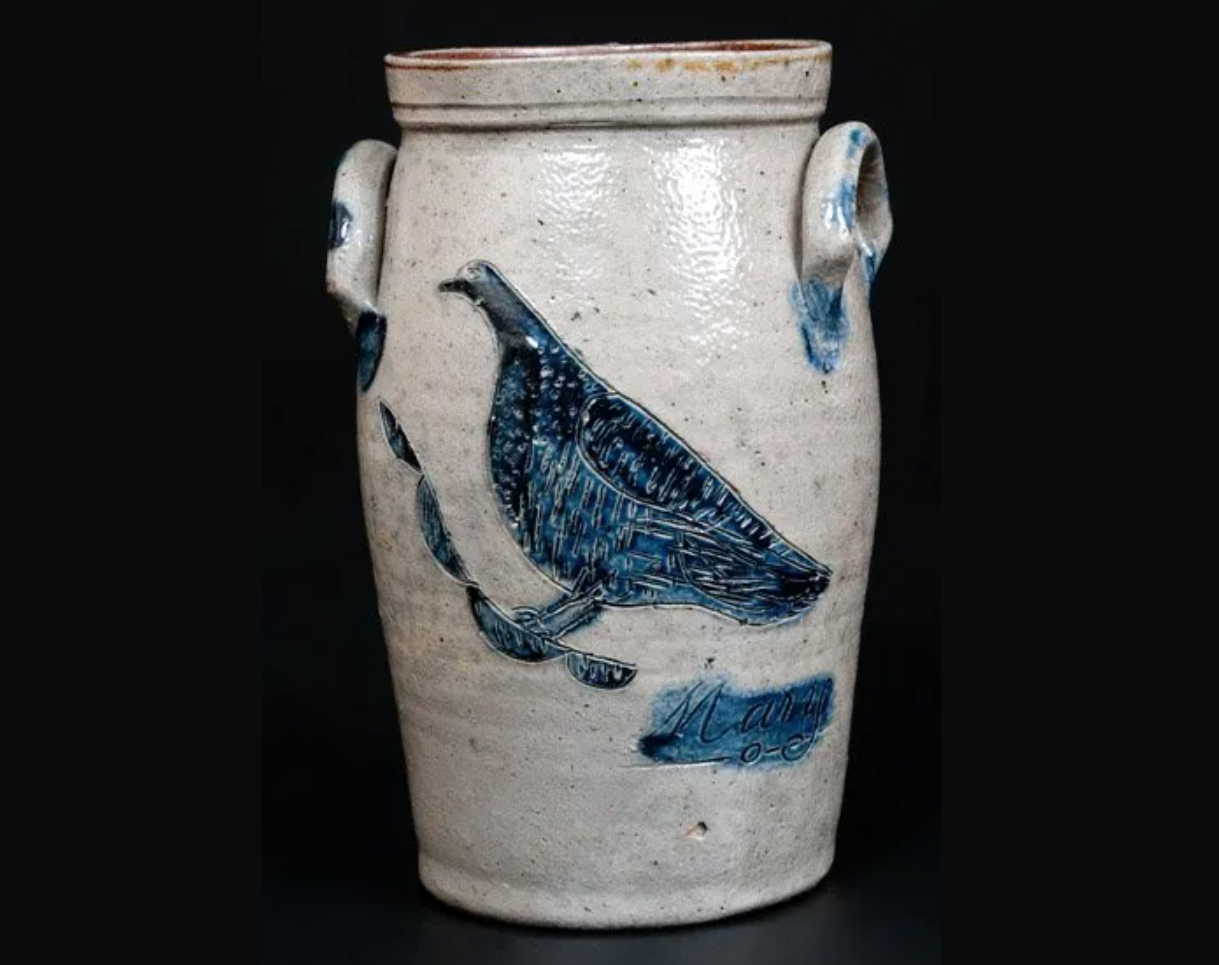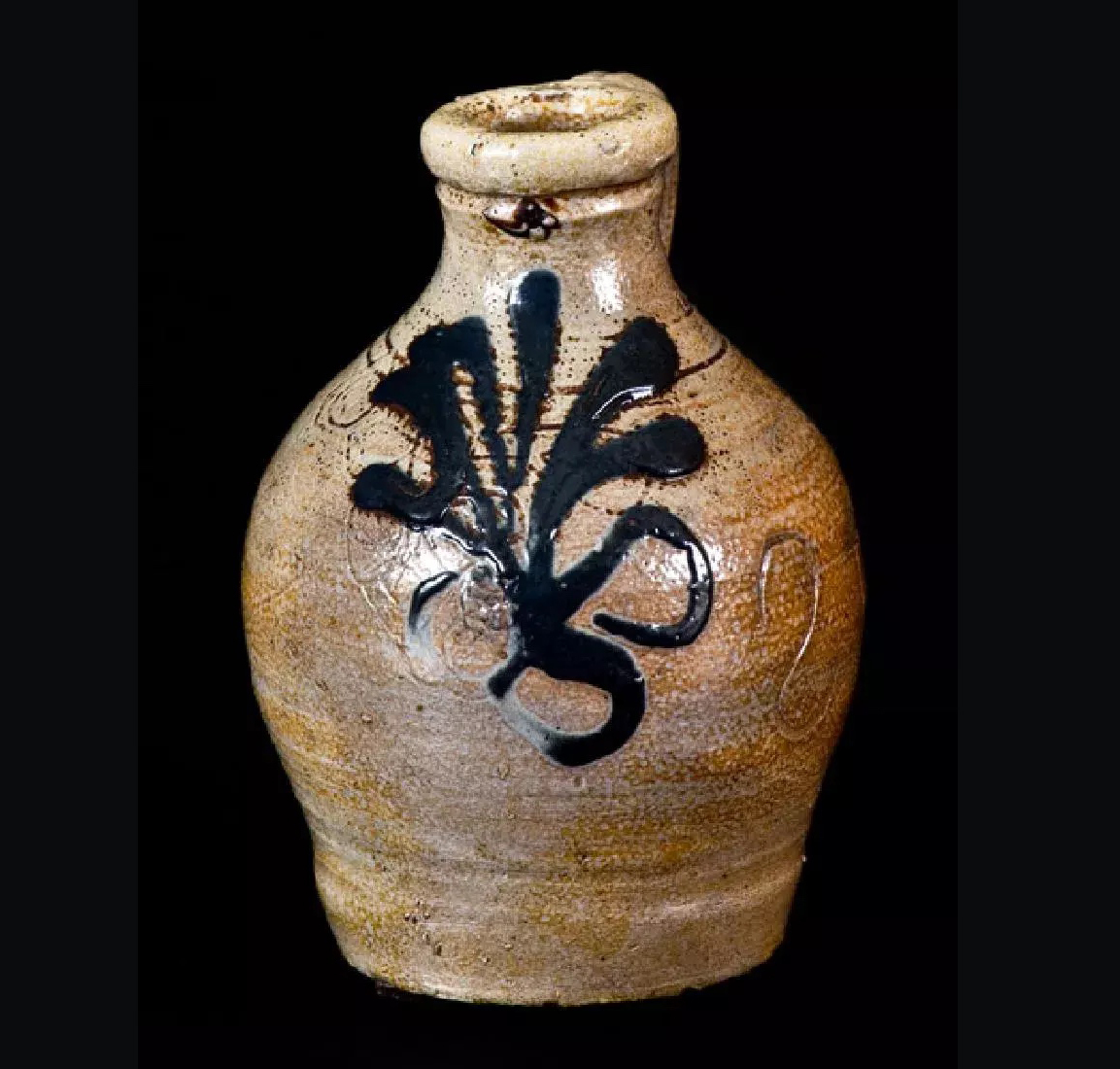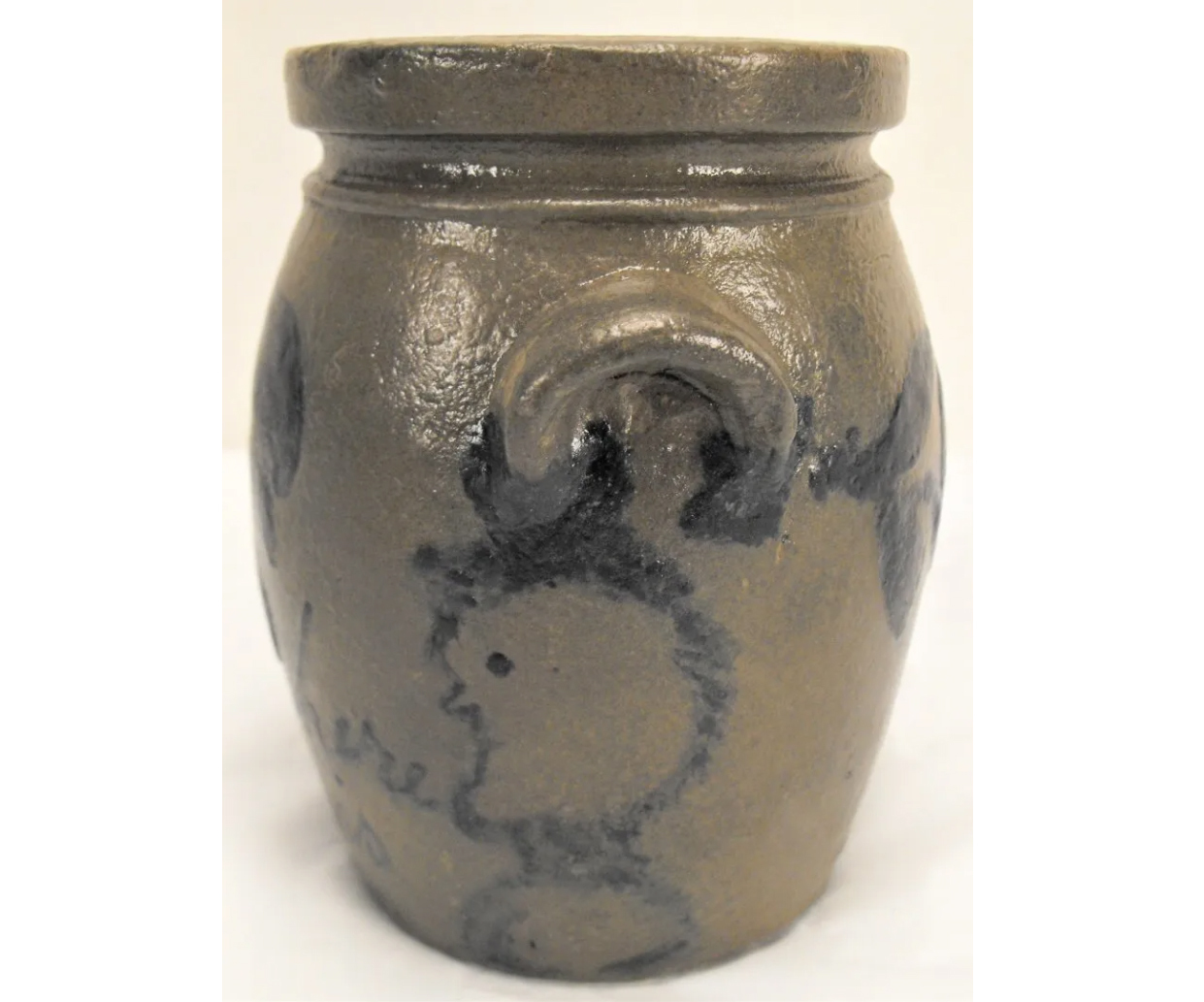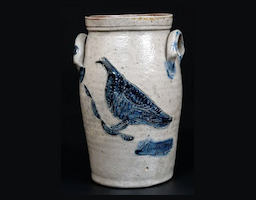
NEW YORK — Bigger is not always better. Beautifully crafted stoneware miniatures are not just functional, they are as aesthetically pleasing as their standard-size counterparts. Working on a small scale can be more challenging for the potter, particularly when creating and attaching diminutive features such as removable lids and open spouts. But that explains why these tiny delights are so highly prized.
Collectors appreciate and value the time and patience required to make these minute works of art, which is reflected in their robust prices at auction and on secondary markets. While most might never come close to the $1.5 million auction record achieved last year for a very large stoneware jar, rare and important miniatures perform well. Signed examples with notable incised decorations, such as figural imagery, religious verses or a few lines of poetry, usually bring the highest prices, but there is enough diversity in the market for stoneware collectors who have an affinity for miniatures.

Stoneware jugs, jars, churns and pitchers are plentiful and can be found in a seemingly endless variety of motifs. The level of care with which a piece is incised and decorated with cobalt seriously affects its value. A circa-1745 ovoid-form miniature stoneware jug detailed with a thick slip-trailed cobalt foliate image and bearing watchspring (aka spiral) motifs, attributed to Adam States, Sr. of New York City, earned $31,000 plus the buyer’s premium in March 2017 at Crocker Farm.

This circa-1745 miniature stoneware jug attributed to Adam States Sr. achieved $31,000 plus the buyer’s premium in March 2017. Image courtesy of Crocker Farm and LiveAuctioneers.
This jug, one of the oldest intact examples of signed American stoneware, is particularly notable for its delicately-scrolled handle, which exhibits European stylistic influences. “Establishing a clear connection between the European stoneware tradition and pieces produced in America by immigrant potting families is often a difficult one,” the auction catalog said, noting the jug’s handle indicates a clear connection to 18th-century Westerwald stoneware.
Also exhibiting lavish cobalt decoration was a miniature Ohio stoneware churn that realized $12,000 plus the buyer’s premium in July 2015 at Crocker Farm. The piece, which tops out at 8⅜in, is clearly a petite example of the form when compared to the full-sized version; even a five-gallon churn would typically be about 18in tall. This churn is thought to have been a presentation piece for a child, probably a girl called “Mary,” judging by its inscription. It features a large incised bird perched on a stylized branch or banner. Measuring less than a half gallon in size, the churn does not show the typical heavy wear that most larger churns exhibit.

Not every potter produced miniatures, and the Black family, which began potting around 1840 in Somerfield, Pennsylvania, is only known to have made a few. Stoneware from the G & A Black Pottery is highly regarded in the realm of southwestern Pennsylvania pottery. A 5⅛in-tall jar attributed to the pottery sold for $6,000 plus the buyer’s premium in January 2019 at Carey Auctions. It featured a side profile of a person along with several inscriptions, including “Here She Is” and the name “Annie.”
While most stoneware has a certain universally-accepted look, with the paste color typically gray or tan to give it the appearance of stone, some potters liked to glaze their pieces dark. Bauhaus potter Theodor Bogler made many miniature works, among them a 1923 teapot that stands just about three inches tall. It made €27,000 (about $27,442) plus the buyer’s premium in December 2016 at Quittenbaum Kunstauktionen GmbH. The piece, signed TB, was decorated matte black inside and was glazed dark brown on beige on the exterior.

Better known for its porcelain (hard-paste) figurines, Doulton Lambeth issued a four-inch-tall stoneware tableau by ceramicist George Tinworth, depicting a mouse pushing a vase-laden wheelbarrow. The circa-1885 piece, which was glazed in multiple colors, including tan, blue and green, earned $8,250 plus the buyer’s premium in February 2022 at Lion and Unicorn.
Stoneware vessels were originally utilitarian, but by the 19th century, they had been elevated to folk art, and they continue to attract collectors. While miniatures admittedly do not demand much display space, making them easy to collect, the prime reasons to pursue them are their beauty, their historical importance, and how well they reflect a mastery of the form. Only the most skilled potters could create miniatures that featured the same proportions, thick walls and elegant decorations of their full-sized cousins.


